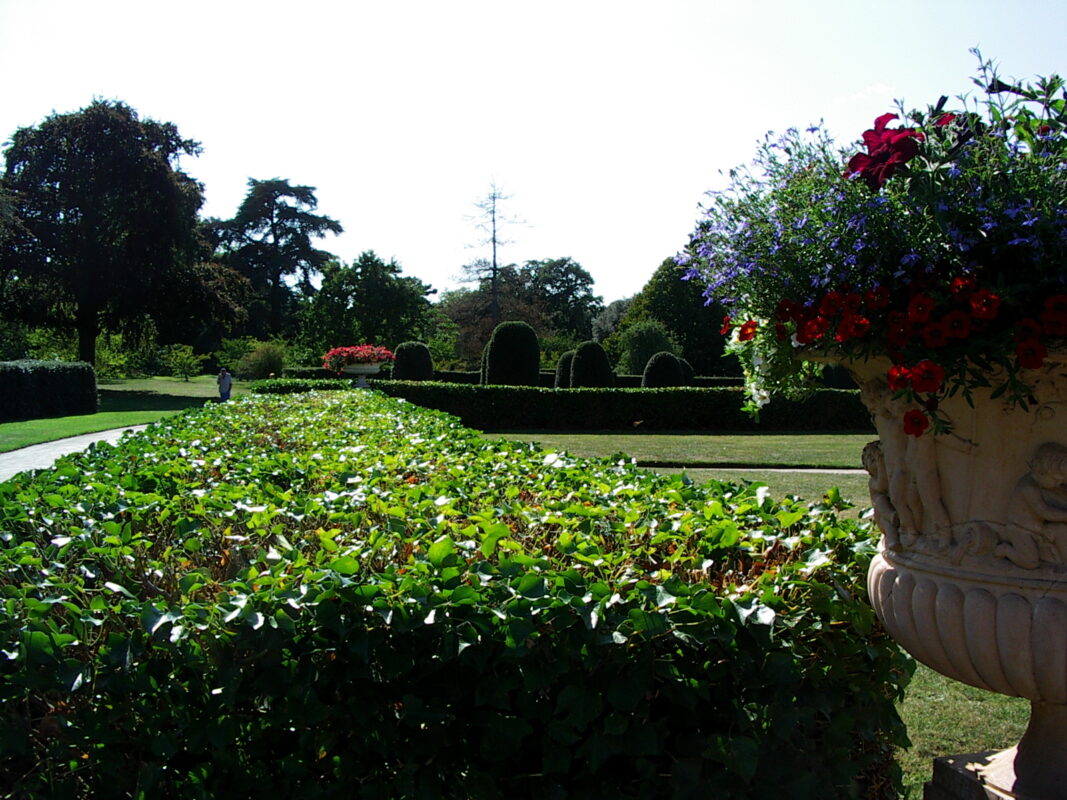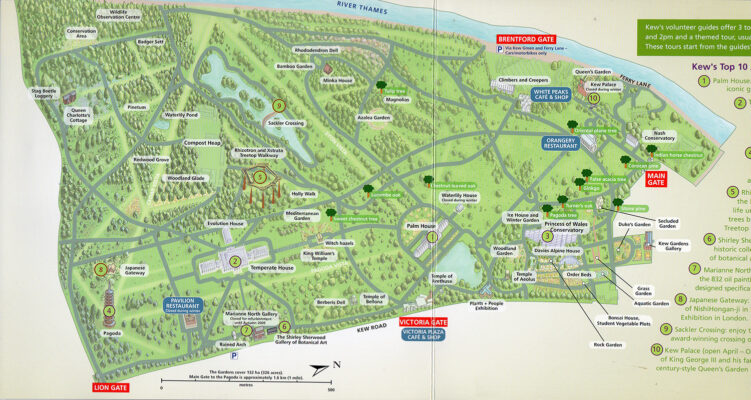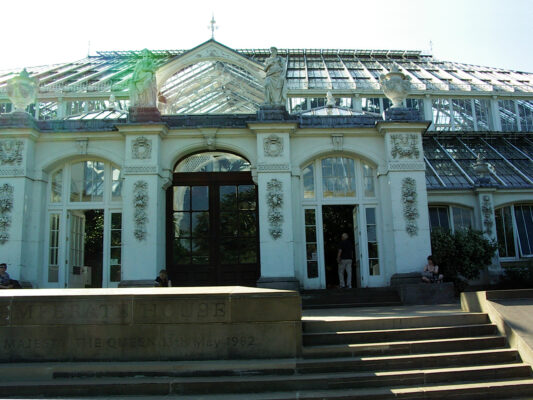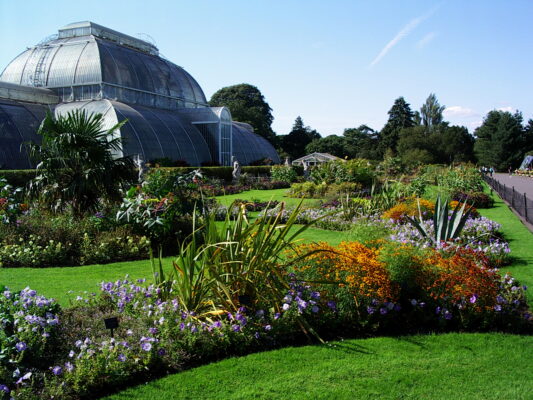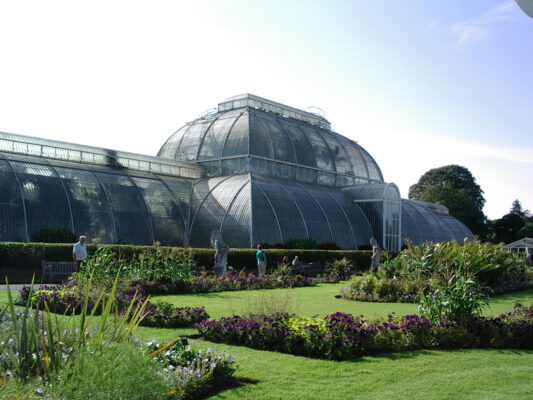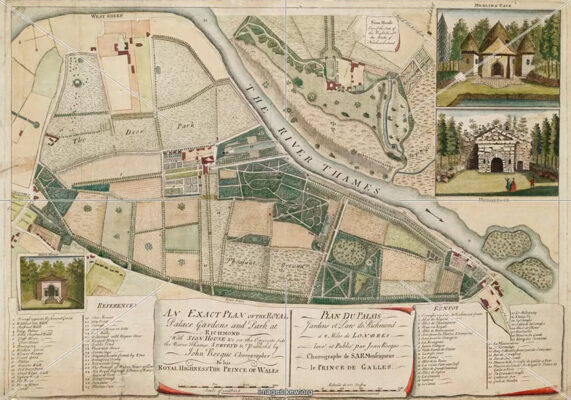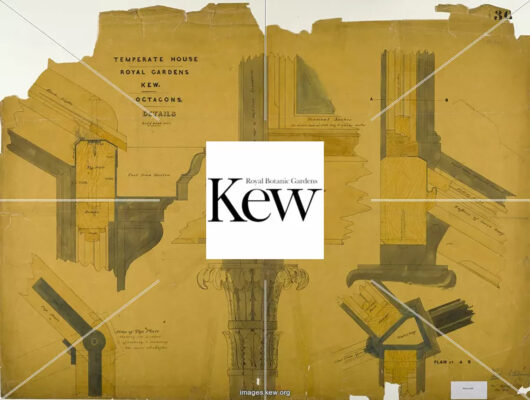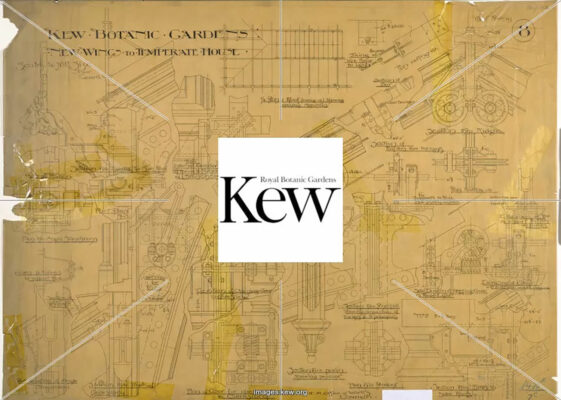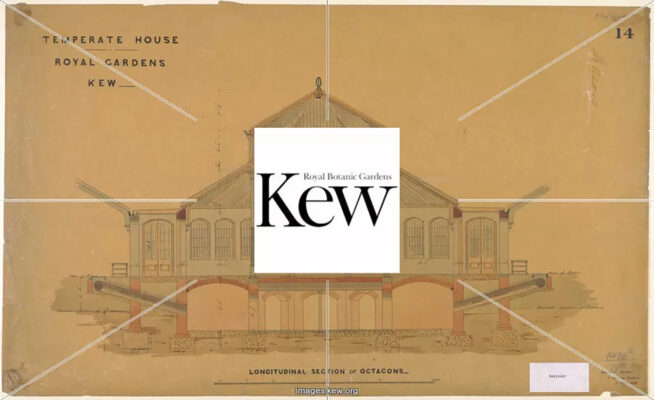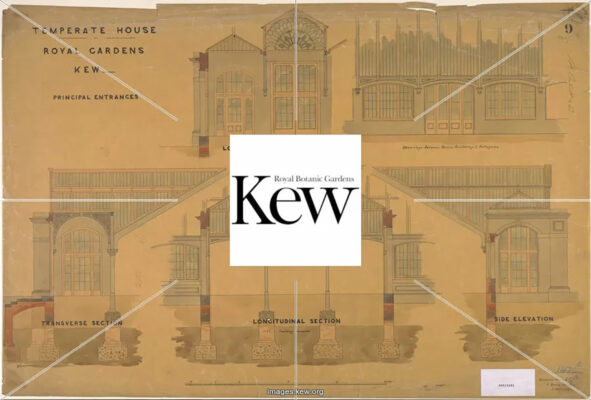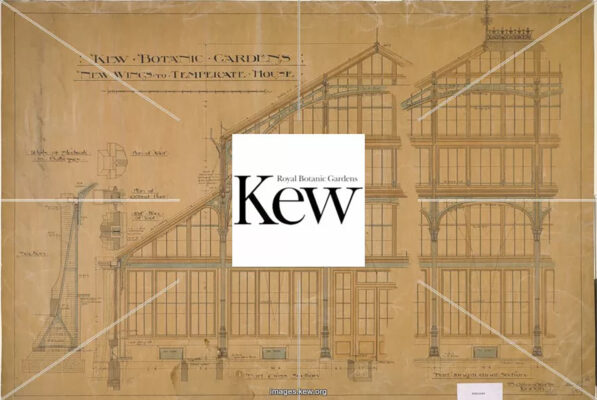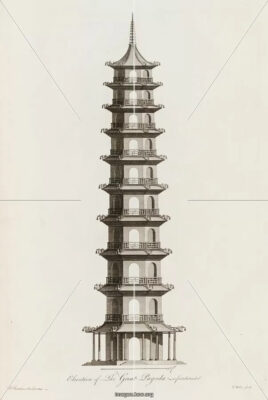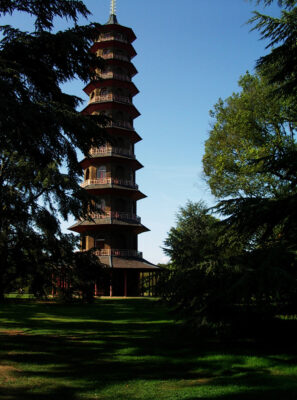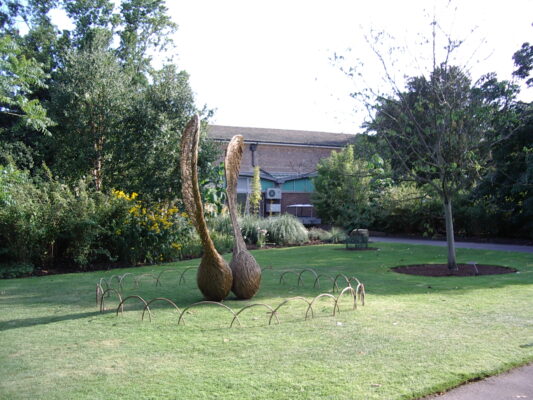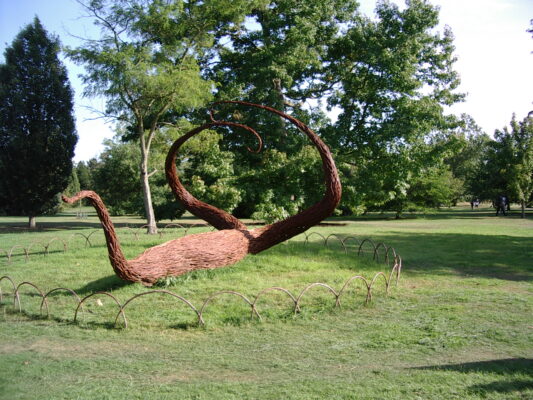Kew Gardens: a bit of history
The first nine acres of Kew Gardens were born in 1759 at the behest of Princess Augusta, mother of King George III and are located just outside London. Reachable by subway!
Older than the park was already the Kew Palace, from 1631, which today can be visited and takes the visitor to the aristocratic rooms of the 1600s.
The first projects were by the then very famous Decimus Burton and William Chambers.
Decimus Burton, a very prolific Victorian architect and landscape architect both in England and abroad, he is not a well-known designer, although many of his works are still visible in important parks in London and beyond.
In Kew Gardens are the Temperate House, the Palm House, the Waterlily House and the Pagoda.
For the structure he was inspired by shipbuilding architecture. Perhaps this is why the shape resembles the keel of an upturned ship.
William Chambers, swedish by birth, he first worked in China, absorbing its taste. Then he studied architecture in Paris and Rome, returning to England ready to open his own architecture studio. Reading her story one would like to have a life like hers.
His taste, influenced by the Chinese one, was very successful at the time, also driving the entire production of his time.
In this regard, I recommend reading the article “The book of oriental dreams“.
Let’s take a closer look at some of Kew Gardens’ greenhouses
The main greenhouses that can be visited at Kew Gardens are the aforementioned Palm House and Temperate House, but they are not the only ones in this paradise of over 120 hectares.
Another large greenhouse, built in modern times, is the one inaugurated by Princess Diana and named after Princess Augusta: il Princess of Wales Conservatory.
Another small, but no less important greenhouse is the Davies Alpine House which bears the same content in its name.
These greenhouses are part of a broader research and conservation of seeds with a far-sighted vision of the future.
Kew Gardens: The tables of the original projects
Wandering around Kew Gardens sites I came across the original project drawings and as an architect (inside & outside) I wanted to save them on my pc. Now I present them to you.
The ones I have downloaded are more than 40 and they do not just tell what we see, but also the way of thinking of the time regarding the forms, the construction strategy, the distribution of spaces.
There is a lot to learn from this work. Paxton himself based this work for the Christal Palace di Brighton.
The foundations, the opening movements of the windows, the heating methods, the underground rainwater storage tanks: every detail is carefully studied.
Visit to Kew Gardens: What to see and tickets
And following such a project, what can Kew Gardens offer besides greenhouses?
Inside you will find a pine forest, woods of Magnolias, Bambu, Azaleas.
Mediterranean gardens, of Rhododendrons, of the Roses with its pergola, the formal ones of the Queen and the Duke, that of the grass (with more than 500 species of graminaceae and poaceae) two galleries of botanical art, a walk at height in the woods where you they can touch the treetops, two lakes and the water lily pond.
The Minka House, example of anti-seismic construction made entirely with plants and natural materials that was donated by Japan in 2001 following the Japanese Festival.
The Imperial Messenger’s Gate which was instead given as a gift after the Japanese-British exhibition in 1910.
In the height of the temples they have not forgotten to insert a dozen of them including a cottage. Here they study and protect bees, butterflies, birds, mushrooms and Lucanidae (a family of scarabs very common along the Thames River) and if you want to participate in the evolution of the planet you can also donate for research work.
The Pagoda unfortunately, cannot be visited and 22 years ago it lost all 80 golden dragons that decorated the tips of the roofs and that you can taste in the drawing below, but still today, with its purest Chinese style, popping up among the trees as a surprise, walking around it leaves you breathless.
When you are dead of fatigue, but happy in your eyes and in your mind, you can drag yourself to two restaurants or, in two cafes & shops where you can spend the remaining budget after paying the ticket, in magnificent souvenirs by Kew Gardens.
PS: the ticket goes from 11.00 to 21.45 £ for an adult depending on the period, the advance booking and the donation, but you will find everything on their website kew.org
Now on horseback! Work awaits us! Our new wonderful outdoor space is about to be born!
GOOD WORK and … if you have any questions please write to info@mondodelgiardino.com
Sources of images: the current floor plan comes from my book “Souvenir Guide” taken on site as well as the color photos; all the project tables including the Pagoda elevation and the original plan are from images.kew.org;


